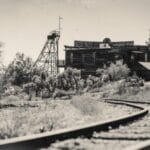Back in May 1914, the idea of seeing people at a distance, as reported by The Times of London, seemed like pure science fiction. Archibald Low’s Televista was a marvel, yet a far cry from the screens that light up our homes today. Television wasn’t born from a single mind; it was a global puzzle pieced together by many brilliant inventors. John Logie Baird wowed London in 1925, Charles Francis Jenkins pushed boundaries in the U.S., and Kenjiro Takayanagi showcased a system with sharper images in Japan by 1926.
The world’s first TV station, W2XB, flickered to life in New York City in 1928. Little did these pioneers know that their invention would become a powerhouse of mass entertainment, a reality that truly unfolded after World War II. From those early days to now, television has grown from an expensive novelty into an ever-present force. Join us as we journey through ten groundbreaking moments that not only lit up screens but also shaped history, bookended by the reign of a queen who witnessed it all.
10 Elizabeth Takes Up the Crown
In a post-World War II Britain, people desperately needed a reason to smile. Queen Elizabeth’s coronation on June 2, 1953, was just that—a grand spectacle broadcast to millions. Displaying a keen understanding of television’s power, the Queen insisted on BBC cameras inside Westminster Abbey. This move went against advisors who feared it would diminish the monarchy’s mystique. Elizabeth, however, aimed for unity, envisioning herself as a figurehead for the Commonwealth.
An astonishing twenty million people tuned in live. Homes, pubs, and cinemas were packed with viewers. For the very first time, a television program captivated more people than any radio broadcast had before. Across the pond, 85 million Americans eagerly watched recorded highlights, getting a glimpse into a historic ceremony many had only dreamed of seeing.
9 The First Step
The journey of television broadcasting took a significant leap in August 1932. Using a 30-line mechanical system, the BBC aired its first program. John Logie Baird himself appeared, thanking the corporation. Those early “lookers-in,” as viewers were known, witnessed a charmingly eclectic mix: a performing sea lion, a Ju-Jitsu demonstration, and other curiosities.
As the clip shows, the USA soon took these developments even further. Early RCA broadcasts emphasized the technical hurdles still to overcome. Interestingly, television was initially seen as an educational tool, an extension of radio rather than its competitor. The production quality was surprisingly good for its time, and the presenters exuded confidence in this new medium’s future. Perhaps the biggest challenge then was making television sets affordable for the average household.
8 Walter Cronkite Announces JFK’s Assassination
The haunting footage of President John F. Kennedy’s assassination in 1963 is etched in many memories. However, this film wasn’t live TV; Abraham Zapruder captured it on silent 8mm film. TV crews were actually stationed elsewhere, awaiting Kennedy’s arrival at the Dallas Trade Mart.
No one anticipated the motorcade would warrant live coverage – a decision lamented later amidst widespread speculation. Reporters, however, were swift to phone in the tragic news. Within half an hour, around 70% of Americans had heard about the shooting. The clip features Walter Cronkite, often called “the most trusted man in America,” delivering the confirmed news of President Kennedy’s death. His professionalism shines through; visibly affected yet composed, he finished the bulletin, informing a nation plunged into grief.
7 Doctor Who?
On a decidedly different note, the day after the JFK assassination, the BBC introduced a character who would travel through time and capture hearts worldwide: Doctor Who. This Time Lord continues his adventures today, boasting an enormous international cult following.
Looking back, early episodes might seem quaint with their endearingly ‘fake’ props. Yet, the show always possessed strong storylines, a talented cast, and a signature touch of humor. While the production quality has evolved dramatically, that unique, tongue-in-cheek charm remains. Who can forget their first encounter with a Dalek? For many, like myself at seven, it was a terrifyingly delightful moment spent peeking from behind the sofa!
6 Neil Armstrong on the Moon
For those old enough to remember the Apollo 11 mission in 1969, Neil Armstrong stepping onto the lunar surface is an image burned into memory. Suddenly, science fiction felt real; humanity seemed on the brink of conquering space. President Kennedy had set the ambitious goal in 1961: reach the moon by the decade’s end. Given the technology of the time, it must have felt like an impossible dream to many.
But NASA’s dedicated teams delivered spectacularly. As Armstrong took those first steps, he uttered words that echoed across the globe: “That’s one small step for man. One giant leap for mankind.” Armstrong later clarified he’d said “one small step for a man.” Considering the transmission traveled 238,900 miles, it’s a tiny misquote we can forgive the media for! For years, the Soviets downplayed their lunar ambitions, but we now know they were indeed in a race they ultimately lost.
5 Challenger Explodes
January 28, 1986, remains a dark day in space exploration. The space shuttle Challenger embarked on its mission from Cape Canaveral, Florida, only to meet a tragic fate. Reaching 46,000 feet, its solid rocket booster exploded, tearing the shuttle apart and claiming the lives of all seven crew members. Evidence suggests some may have survived the initial blast, but escape was impossible from the disintegrating craft.
The tragedy was compounded by the fact that Challenger carried Christa McAuliffe, a school teacher, whose students were watching the launch with eager anticipation. The cause was traced to two O-ring seals, made brittle by unusually cold weather, which allowed pressurized gas to leak and ignite a propellant tank. Space programs inherently carry risks, and from such devastating accidents, crucial lessons are learned.
4 The Simpsons’ First Appearance
On April 19, 1987, The Tracey Ullman Show featured a short with some quirky, yellow-skinned animated characters. This was the world’s first glimpse of The Simpsons, a show that would become a global phenomenon and is still going strong. With its intelligent scripts, sharply defined characters, and irreverent humor, it revolutionized animation.
The Simpsons appeals to all ages. While some might deem its humor unsuitable for younger audiences—Homer’s beer consumption and dimwittedness are legendary—the show often champions strong family bonds and values like love and loyalty. Remarkably, a British poll once found The Simpsons more popular than their own royal family! This seemingly very American show resonates worldwide, striking all the right chords.
3 Breaching the Berlin Wall
After World War II, global power starkly divided into two camps: the West, led by the United States, and the East, by the Soviet Union. Their relationship oscillated between tense standoffs and brief periods of calm, with the constant threat of nuclear annihilation looming. Many lived with an undercurrent of worry about the future.
The collapse of the Soviet system, dramatically symbolized by the fall of the Berlin Wall in 1989, felt like the dawn of a new era. Millions watched live on television as East Germans streamed freely into West Germany – a truly groundbreaking moment. While the political landscape has shifted since, perhaps things didn’t unfold quite as optimistically as hoped. In some ways, a world with two main players was simpler; today, global politics feel far more complex.
2 A Long Time Coming
The American drama series Dawson’s Creek, which ran for six seasons starting in 1998, chronicled the lives of Dawson and his friend Joey through their teenage years. In 2000, an episode aired that marked a quiet but significant milestone: the first gay male kiss on U.S. television. Women had seen such a moment earlier, with a kiss between two female characters on LA Law in 1991.
Television producers, aiming for broad appeal, often tread cautiously, aware of diverse audience beliefs. This sometimes meant lagging behind societal shifts. However, the rise of streaming platforms and increased viewer choice has encouraged producers to become more adventurous and reflect a wider range of human experiences.
1 Elizabeth at Rest
On September 19, 2022, Britain came to a standstill for the funeral of Queen Elizabeth II. Estimates suggest that a staggering 4.1 billion people worldwide tuned in to witness the event. If these figures are accurate (though there’s some debate on calculation methods), it means over half the global population watched, making it potentially the largest live television event ever.
Our list began with the pageantry of a coronation and concludes with the solemnity of a funeral. Throughout her 70-year reign, Queen Elizabeth II witnessed profound changes in the world. Television has not only reflected these transformations but, at times, has also been a catalyst for them, proving its enduring power to unite, inform, and move us all.
Television has come a long way from flickering images in a lab to a global force that shapes our understanding of the world. These ten moments are just a glimpse into its incredible journey, showcasing its power to document history, launch cultural phenomena, and bring humanity together for unforgettable shared experiences. The screen in our living room has often been a window to the world, and sometimes, a mirror reflecting our own progress and challenges.
Which of these TV moments do you remember most vividly, or what other groundbreaking broadcasts would you add to this list? Share your thoughts in the comments below!










